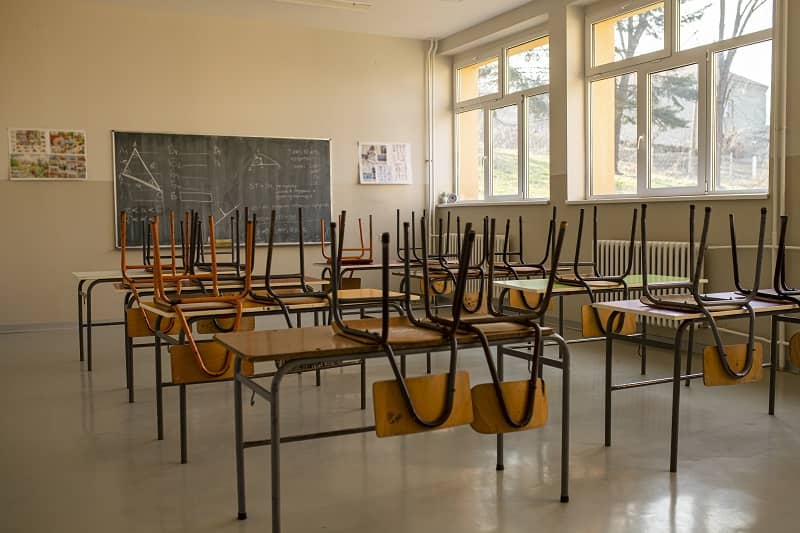By Steve Buckstein
The vast majority of Oregonians attended public schools assigned to them based on their ZIP codes. Yet, everyone has friends or relatives who made different choices such as private, religious, and home schooling.
Few know, however, that these other choices were almost eliminated in the 1920s. Bigotry was strong across America then, and not only against Blacks. The Ku Klux Klan and others placed a measure on Oregon’s 1922 ballot that would have required children to attend only schools run by the government. The Oregon Compulsory Education Act was defended as “a “precautionary measure against the moral pestilence of paupers, vagabonds, and possibly convicts.”
Approved by a narrow margin, the measure was challenged and overturned by a unanimous U.S. Supreme Court decision in 1925. In its ruling the Court said “the fundamental theory of liberty upon which all governments in this Union repose excludes any general power of the State to standardize its children by forcing them to accept instruction from public teachers only. The child is not the mere creature of the State; those who nurture him and direct his destiny have the right, coupled with the high duty, to recognize and prepare him for additional obligations.”
So, while choices other than public schools remained available, most families have been unable to afford public school taxes and private school tuition at the same time. This reality caused a small group, including myself, to place a citizen initiative on Oregon’s ballot in 1990. Measure 11 would have provided refundable tax credits to every K-12 student in the state, which they could use to attend any public, private, religious, or home school of their choice. No state had voted on such a sweeping reform before, and we felt it was time for Oregon to lead the way.
On election night that November we came up short, with only about one third of the vote. That didn’t surprise us, because school choice was a new concept to most people, and it was easy for our opponents to scare voters into saying No. Before the votes had even been tallied, we began thinking about how we could move our school choice agenda forward in the future. We decided that Oregon needed a free-market think tank to advocate for school choice as well as other limited government ideas. We incorporated Cascade Policy Institute two months later. In the 25 years that have now passed some significant progress on the school choice front has been made.
We worked hard to introduce the charter school concept in the state in the mid-1990s. By 1999 the Oregon legislature passed a charter school bill that now allows more than 120 public charter schools to operate across the state.
Also in 1999 we evolved from just talking about school choice to actually providing choice to hundreds of low-income kids in the Portland area through our Children’s Scholarship Fund program. We initially raised $1 million of private money that was matched by $1 million nationally to provide partial scholarships to over 500 students for four years at the schools of their choice. The fact that over 6,600 children applied for those 500 slots demonstrated that the demand for school choice is great in Oregon. We can’t help them all, so we continue to advocate for broader programs that will.
In 2011 three school choice bills passed as part of an education reform package, including expansion of online charter schools, more options to sponsor new charter schools, and open enrollment between public school districts.
Over these past twenty five years Cascade and others have brought a number of national speakers to the state talking about the benefits of school choice elsewhere, including some 61 privately or publicly funded scholarship programs, charter schools, education tax credits, vouchers, and Education Savings Accounts (ESAs).
In 2014, Cascade proposed a limited Education Savings Account bill to help disabled, foster, and low-income children. ESAs allow students to take some or all of the money the state would spend on them in a public school and put it on a restricted use debit card. They can fund a wide variety of approved educational options, such as private school, individual tutoring, and distance learning. Any money not used in a given year can be rolled over to spend on educational expenses in the future, even into college.
Earlier tax credit and voucher programs are now seen as the rotary-dial telephones of the school choice movement. ESAs, with their expansive array of options and their ability to hold costs down as students plan and save for the future are seen as the smartphones of the movement— smartphones with virtually unlimited apps to help children learn in their own unique ways.
This year, Cascade is promoting a broad ESA proposal in the Oregon legislature. Senate Bill 437, and other bills that may emerge, are designed to enhance school choice for everyone. In the future, our mission—and yours if you choose to accept it—will be to help our fellow Oregonians understand and support what many now call the new civil rights issue in America: the right of every child, no matter where they live or their parents’ financial means, to reach their own potential by making their own educational choices affordable. Until this right is achieved, too many children will remain trapped in schools assigned to them by their ZIP code that fail to meet their needs.
We won’t stop advocating for school choice until every child has the real choices they deserve. We appreciate the help of everyone who shares this vision. It can’t become a reality too soon.
Steve Buckstein is Senior Policy Analyst and Founder of Cascade Policy Institute, Oregon’s free market public policy research organization.












Patrick
Please bring back school voucher, now a day public school are all bout the money not educate our children
Zelii iokia
What do I need to do to utilize school choice vouchers for six grandchildren I’m currently raising. Please give me direction on steps I need to take. I live in zip code 97230.
Thank you for your time and attention to this matter,
Zelii Iokia